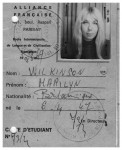The Chateau de Vincennes, Just off the Paris Metro: An Excellent Day Out
On exiting the metro station at the end of the line 1 at Chateau de Vincennes, there is no need to ask directions to the castle or even consult a map, for there it stands in front of you, this massive structure, quite breathtaking and formidable in its sheer scale. Towers, drawbridges and moats: the Chateau de Vincennes has everything one could wish for in an ancient castle with the requisite chequered history that every castle should boast. The Chateau de Vincennes is managed by the Centre des Monuments Nationaux, and the full ticket price is 8.5 euros.
It was in 1365 that Charles V decided to transform the family manor house into a residence fit for a king. The keep, originally built to house the king’s artwork and documents, was 50 meters high and is still the highest of its kind in Europe. In the XVth century, Louis XI changed the rather charming usage of the keep into something rather more sinister when it was used as a jail for his favorite prisoners. The keep remained in use as a jail until the 19th century, housing such illustrious prisoners as the Marquis de Sade and Mirabeau.
On the completion of the keep in 1370, a protective wall was constructed surrounding the keep. Measuring 1100 meters long, it was interspersed by nine towers each between 40 and 42 meters tall. The towers were used both as housing and for defensive purposes. A deep moat, then filled with water, added to the chateau’s defenses.
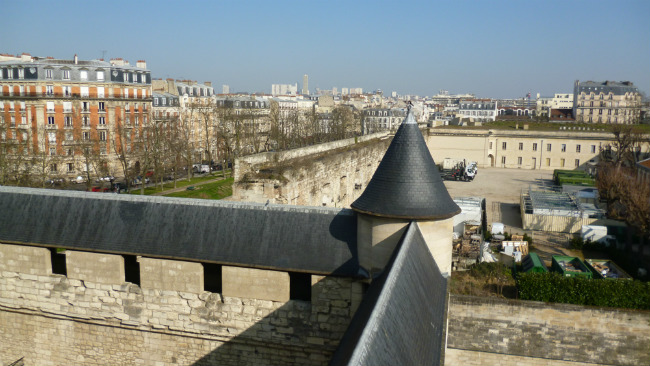
view from the bell tower. Photo: Marilyn Brouwer.
In the courtyard to the left is the oldest preserved example of an outwork staircase (a staircase built against another larger building). From the bell tower there is a view across the entire site and the bell itself is worth noting as although a copy of the original installed in 1369, the original was the first bell ever installed on a civil building.
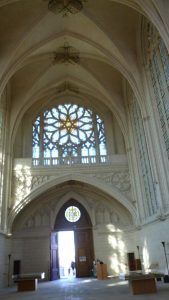
the chateau’s chapel. Photo: Marilyn Brouwer.
The chateau is renowned for its holy chapel which was modelled (albeit on a smaller scale) on Sainte Chapelle of the Palais de la Cité in Paris. The stained glass windows are flanked at either side by the oratory reserved for the queen on the right and the king on the left.
In the 17th century as the Chateau de Versailles took over as the royal residence, the Chateau de Vincennes was gradually abandoned and was variously used in the 18th century as the Vincennes porcelain factory and subsequently as a state prison. During the revolution, enraged workers attempted storming the Chateau with the intention of it following the fate of the Bastille but it was saved by the Marquis de Lafayette. It was later used as an arsenal storing huge amounts of arms.

The Bois de Vincennes in early spring. Photo: Marilyn Brouwer
1794 saw large parts of the Bois de Vincennes cleared for a military training ground. Later in 1854 this proved problematic when Napoleon III, with Haussman (then the Prefect of the Seine) and engineer Jean-Charles Alphand, set about transforming the land into a series of parks which had to be designed around the enormous military field. The three sections each had their own lake with cafes and bandstands. A race track was added to attract more visitors.
Napoleon III gave the Bois de Vincennes to Paris as a public park– all 995 hectares of it. (In 1900 the Summer Olympics took place in the Bois de Vincennes.)
In 1860, Napoleon III had the keep and chapel restored.
During WWII, the Chateau served as a military headquarters and once more the castle witnessed bloody deeds as 26 policemen and members of the Resistance were executed in the moat by the Waffen SS. Their bodies were then thrown into a common grave.
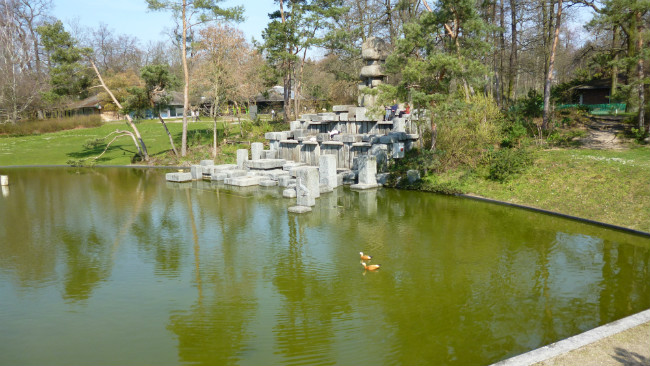
Parc Floral in early spring. Photo: Marilyn Brouwer
1969 heralded the death knell of the military training ground when all 31 hectares was transformed into the Parc Floral. This fabulous park sited just behind the Chateau has 20 pavilions, 650 varieties of Irises alone, 2,000 trees and shrubs, a sculpture garden which includes works by Giacometti, a monumental fountain, lakes which attract water birds but wooded areas which attract woodpeckers, tree creepers, jays and all the small, usual garden varieties.
Vincennes is truly worth a day out. So easily accessible by metro there is much to see and it has a proud history not dependent solely on the Chateau. It was the Pathé brothers who founded their film industry here in 1896 and it soon became the world’s largest film manufacturer. Charles Pathé sold out to the Eastman-Kodak company in 1927 as Hollywood took over as the world’s leader in filmmaking. The result was Kodak-Pathé.
After years of restoration, the Paris Zoological Park (Vincennes Zoo) re-opened in 2014. The animals from Patagonia, Sahel Sudan, Europe, Guyana and Madagascar are housed in duplicate conditions to their natural habitat.
The Vincennes Tourist Office is situated opposite the castle and will provide guided tours and all events and exhibitions information.
Take your camera and a picnic and prepare to be impressed!
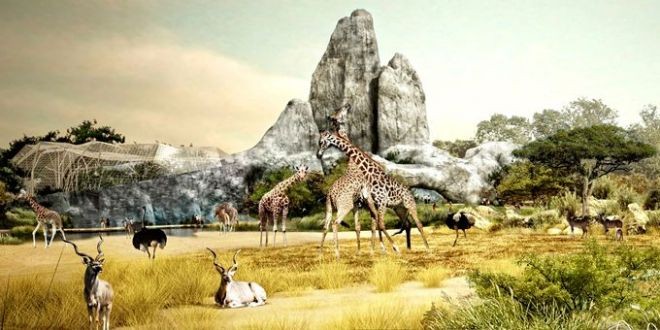
architectural rendering of the zoo’s Sahel-Sudan biozone. Credit: Architectural rendering/ © Artefactory – AJOA / BTuA
Lead photo credit : Chateau de Vincennes. Photo: Marilyn Brouwer

